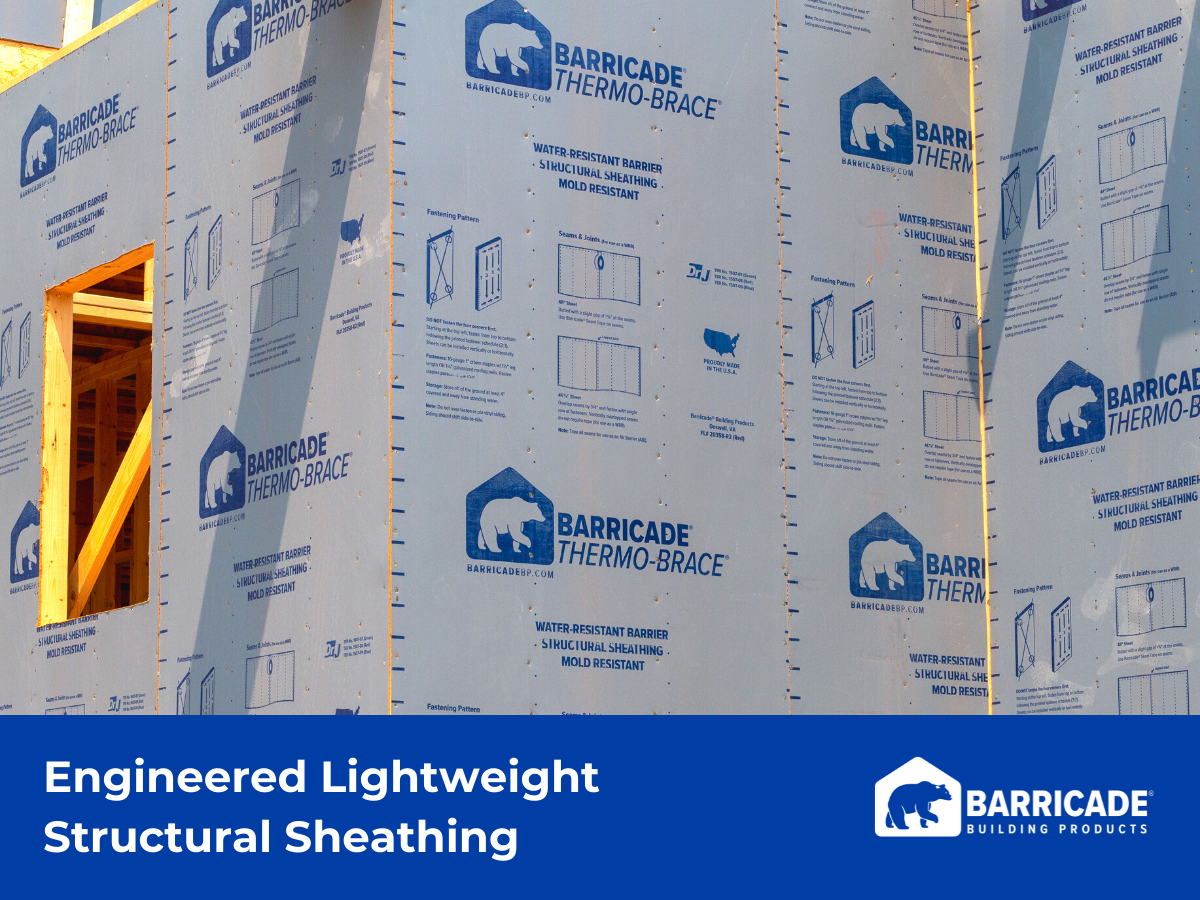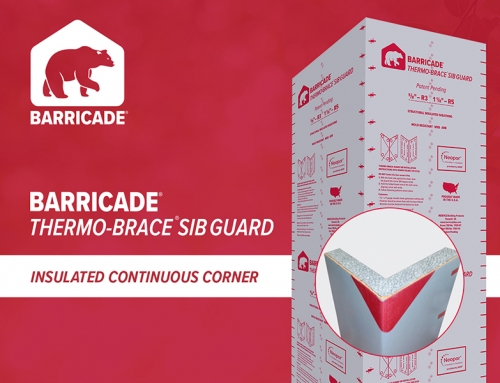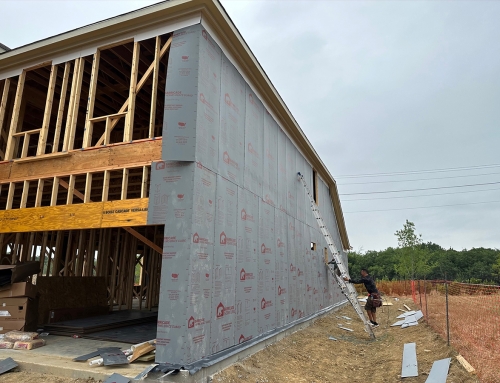Engineered lightweight structural sheathing, sometimes referred to as “thin-wall sheathing,” should be called “strong-wall sheathing.” The name change can be traced to our friends at the International Code Council (ICC) who spend their days producing a wide variety of codes and standards that help determine how houses and buildings get constructed. Barricade excels at developing products that score high with the ICC. The International Residential Code (IRC) is one of the ICC’s most widely accepted and adopted set of standards. It lays down the rules for building homes.
Up to Code
According to the ICC, the IRC is a “comprehensive, stand-alone residential code that establishes minimum regulations for one- and two-family dwellings and townhouses using prescriptive provisions. It is founded on broad-based principles that make possible the use of new materials and new building designs. The 2018 edition is fully compatible with the Family of International Codes.” The code addresses several categories including sheathing types and best practices.
The most popular materials for sheathing include plywood, oriented strand board (OSB), and engineered lightweight structural sheathing, which Barricade markets as Thermo-Brace. Thermo-Brace comes in several configurations including structural sheathing, insulative sheathing, and interior board.
The industry sometimes refers to sheathing as “wood structural panels” (WSP). When WSP’s are added to a house as a sealed layer that prevents air and moisture leakage it’s called “continuous sheathing” (CS). Using WSP in a continuous sheathing format is referred to as CS-WSP. As you might imagine, the IRC has a set of standards for CS-WSP.
Josh Elliott, Technical Director for Barricade keeps up to date on all things related to the IRC. “Barricade Thermo-Brace exceeds the strength requirements of the sheathing when using the WSP and CS-WSP methods set forth in the IRC,” says Elliott. “Millions of homes have been built with Thermo-Brace and similar products throughout the years. Thermo-Brace is a time-tested, well-proven product.”
Saving Energy
Engineered lightweight structural sheathing installed in a continuous format helps boost a home’s energy efficiency but the material also saves shipping costs and resources as compared to OSB. “It’s much more efficient to ship,” says Elliott. “A typical pallet of 7/16″ OSB has eighty sheets. A Thermo-Brace Red pallet has 315 sheets per pallet. You are getting more than 3.5 times more sheets of Thermo-Brace on a truck than you would of 7/16″ OSB.”
The savings are compounded by what happens on the job site. “The thinner structure of Thermo-Brace allows the builder to store much more material in the same footprint as competitive OSB,” says Elliott. The product’s versatility for uses beyond sheathing also keeps it popular on construction sites across the country. “Thermo-Brace, as well as Barricade Utility-Board, is frequently used for surface protection on countertops, doors, marble, tile, and wood floors during construction,” says Elliott.
Saving Time
OSB by its nature is prone to mold and rot. To compensate, a separate layer of house wrap goes on top of OSB to act as an air barrier and a weather-resistant barrier (WRB). The seams in the house wrap then get taped up. Builders who use one layer of engineered lightweight structural sheathing don’t have to spend extra time putting on a layer of house wrap and taping every single seam. “Thermo-Brace has the air barrier and WRB built into the product,” says Elliott.
Barricade also engineered Thermo-Brace in a simple but ingenious way that cuts the use of seam tape in half. The individual sheets are wide and flexible enough to overlap the seams for a tighter seal than you get with house wrap and tape. Elliott says, “If the 48.75″ Thermo-Brace is used, the vertical seams can be overlapped which only leaves the horizontal seams requiring tape, which drastically cuts down on the time to tape seams. The overlap also cuts down on the number of fasteners required as the installed is nailing two sheets at once.” Instead of sawing through sheets of OSB, Thermo-Brace can be cut with a utility knife. Holding the knife at a 45° angle helps prevent the blade from being pinched in the cut.
Wrapping it Up with No Wrap
Building codes are living documents that change with the times. In addition to what the ICC puts out, states and municipalities may have their own codes that sometimes exceed what’s required by the IRC. As homeowners become more informed about lowering energy costs, building codes are constantly being modified.
“With some states moving to require blower door testing for a home’s air barrier, Thermo-Brace helps builders easily meet those requirements,” says Elliott. “The integrated WRB seals the home from water intrusion and provides an air barrier in addition to the structural properties.”
Thermo-Brace goes an extra mile when it comes to keeping the weather out as it has WRBs built into both sides of the material, which stops vapor from moving on both sides of the wall. The synthetic WRB surface is mold resistant and doesn’t provide a food source for mold – unlike wood.
As energy-efficient building materials continue to become more in demand, the awareness of what it takes to build an energy-efficient home expands. Barricade Building Product’s portfolio supports the energy-efficient home with a wide variety of products designed to make things easier on the builder while boosting savings and comfort for homeowners.
Barricade’s Thermo-Brace is strong enough to walk on and can be butted or overlapped. Thermo-Brace also has a higher shear value than other wall sheathing and is dimensionally stable. All grades provide racking resistance, and it can be used as an alternative corner bracing method, with structural ratings equivalent or better than OSB. It can be ordered in custom sizes at no extra charge and carries a 10-year warranty. All of Thermo-Brace’s family of products are proudly made in Doswell, Virginia.
For more information about Thermo-Brace or our family of products come visit us at the International Builder’s show this year in Orlando, Florida. Click on the banner below to get a free pass.








